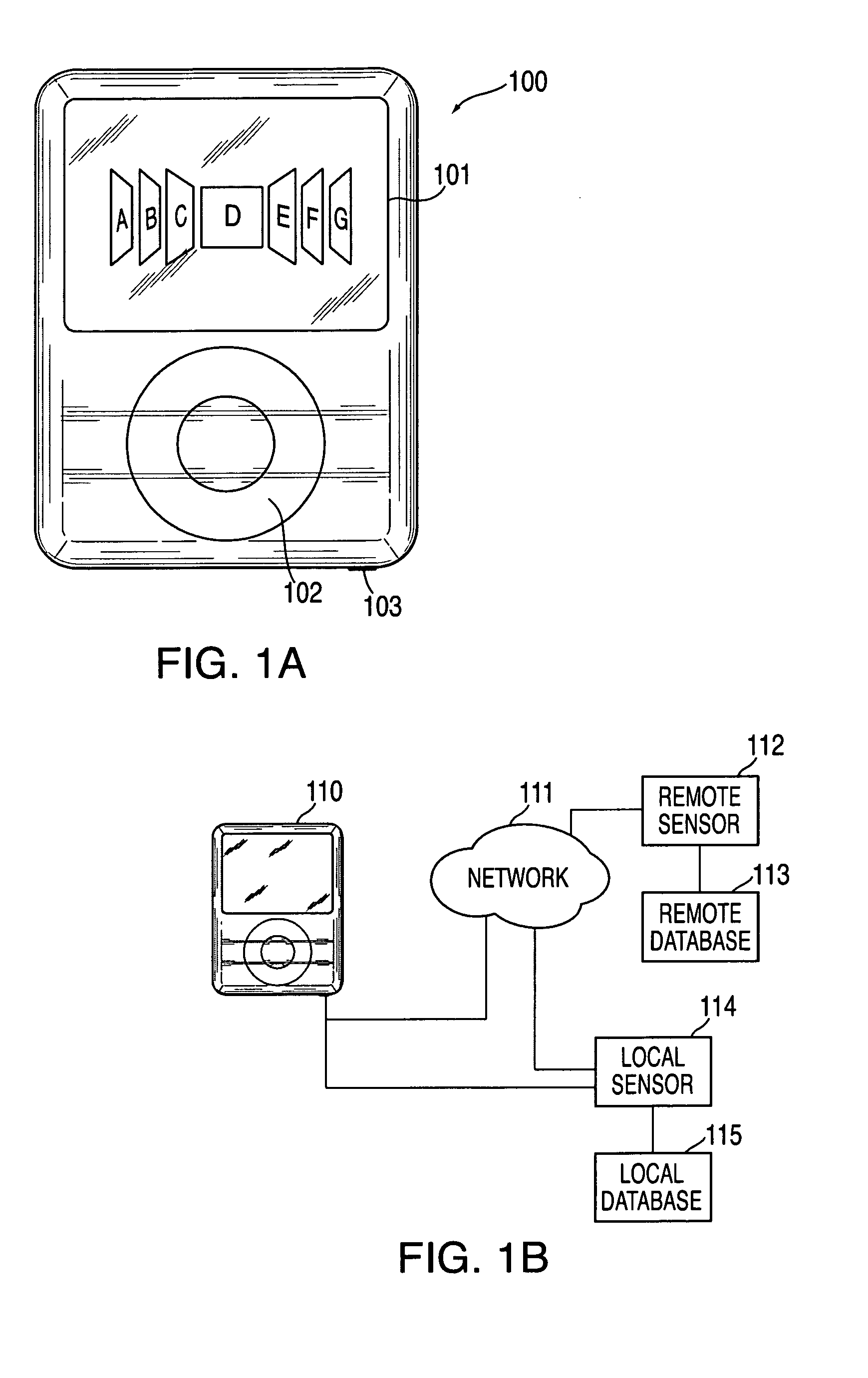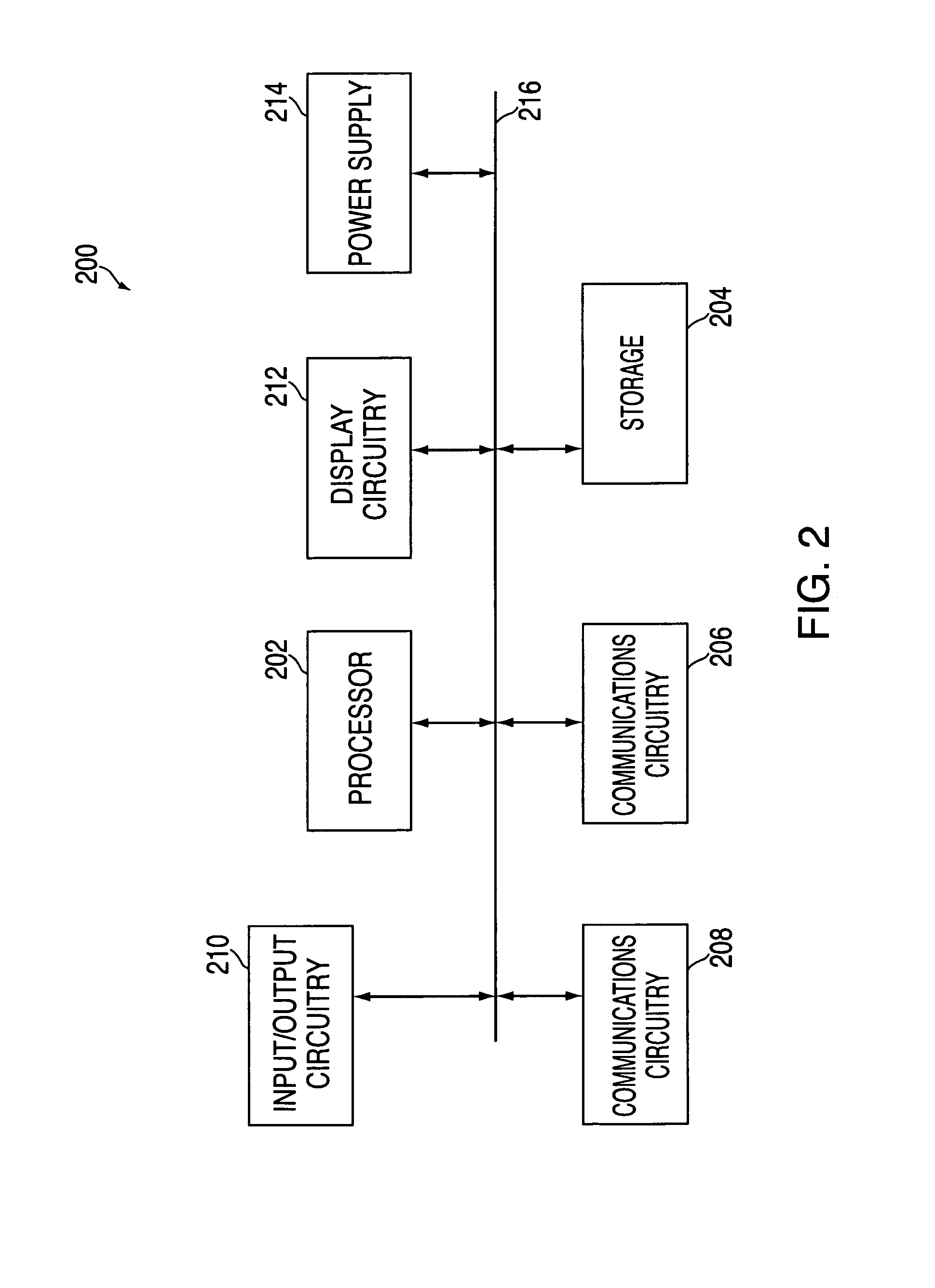Selective frame rate display of a 3D object
a display and frame rate technology, applied in the field of 3d animation, can solve the problems of increasing system resource requirements, limiting increasing the amount of computational resources needed to generate each image, so as to reduce the amount of resources needed, increase system resource requirements, and reduce the amount of computational resources needed
- Summary
- Abstract
- Description
- Claims
- Application Information
AI Technical Summary
Benefits of technology
Problems solved by technology
Method used
Image
Examples
Embodiment Construction
[0022]Referring to FIG. 1A, there is shown an illustrative portable electronic device 100, which embodies the principles of one embodiment of the present invention. Electronic device 100 may be a cellular phone, a digital audio player, a PDA, a GPS system, any combination thereof, or any other type of portable electronic device that includes a display screen 101. Display 101 may display videos or simple 2D and / or 3D graphics and animation. One illustration of the contents of display 101 is shown in FIG. 1A as a collection of music album covers that can move in translational and rotational motion across the screen in response to user input. It is understood, however, that display 101 may display any type of 2D or 3D animation that can be generated automatically or in response to a user input.
[0023]User input component 102 is illustrated in FIG. 1A as a click wheel. Persons skilled in the art will appreciate that user input component 102 could be any type of user input device that is ...
PUM
 Login to View More
Login to View More Abstract
Description
Claims
Application Information
 Login to View More
Login to View More - R&D
- Intellectual Property
- Life Sciences
- Materials
- Tech Scout
- Unparalleled Data Quality
- Higher Quality Content
- 60% Fewer Hallucinations
Browse by: Latest US Patents, China's latest patents, Technical Efficacy Thesaurus, Application Domain, Technology Topic, Popular Technical Reports.
© 2025 PatSnap. All rights reserved.Legal|Privacy policy|Modern Slavery Act Transparency Statement|Sitemap|About US| Contact US: help@patsnap.com



